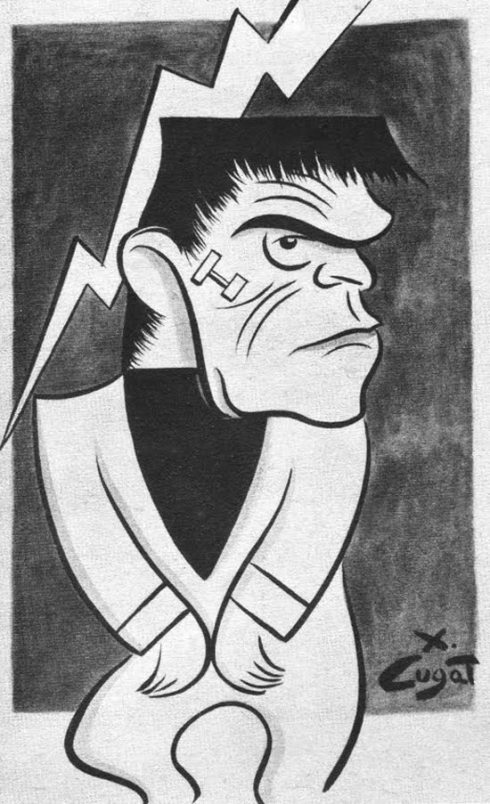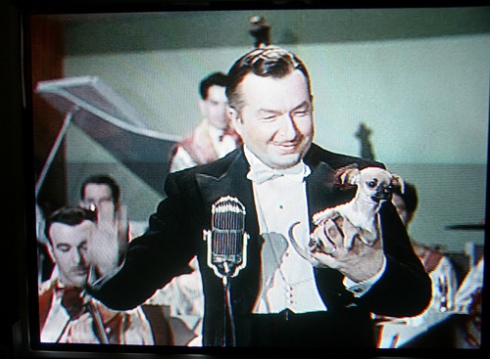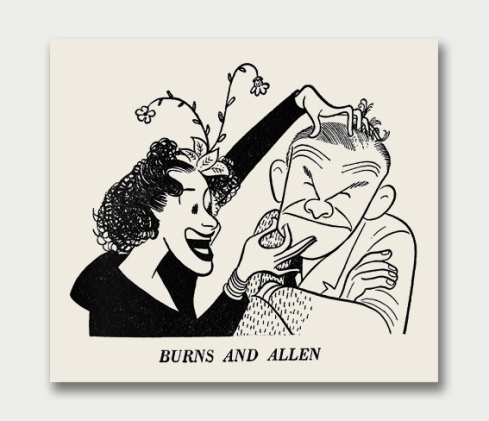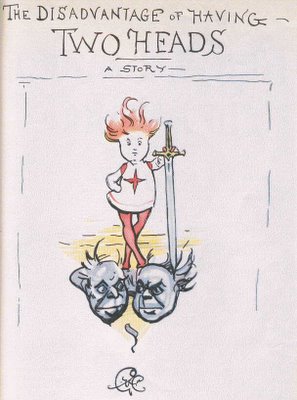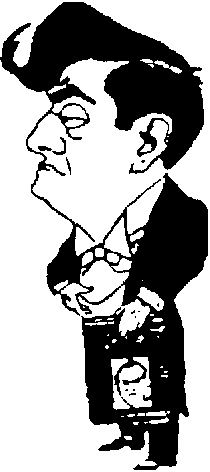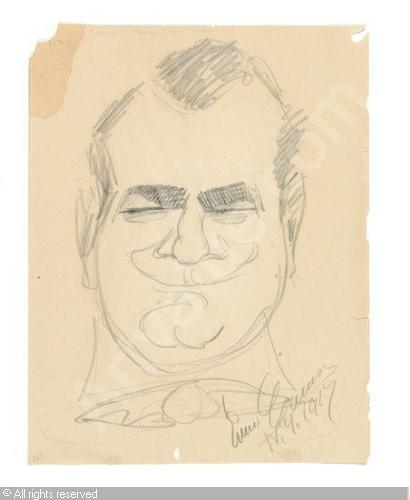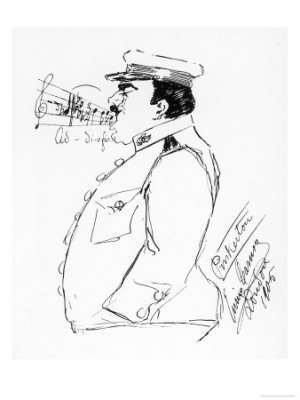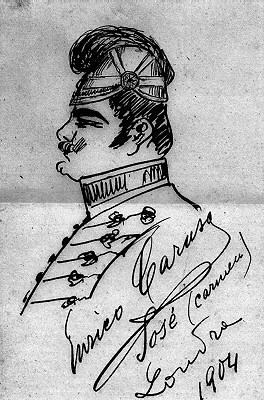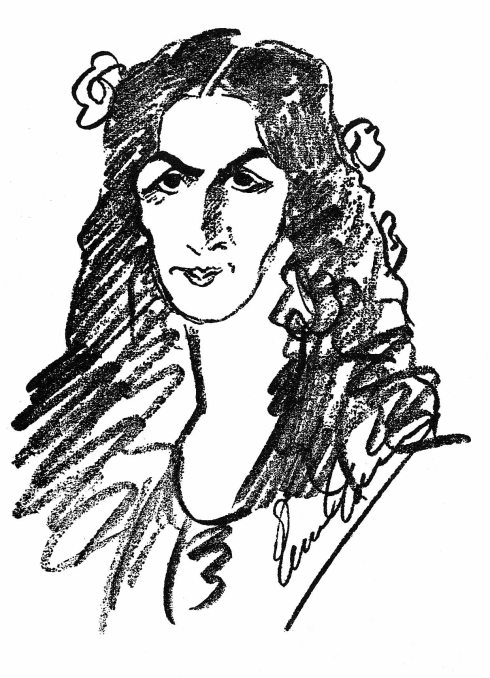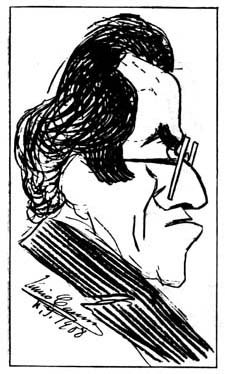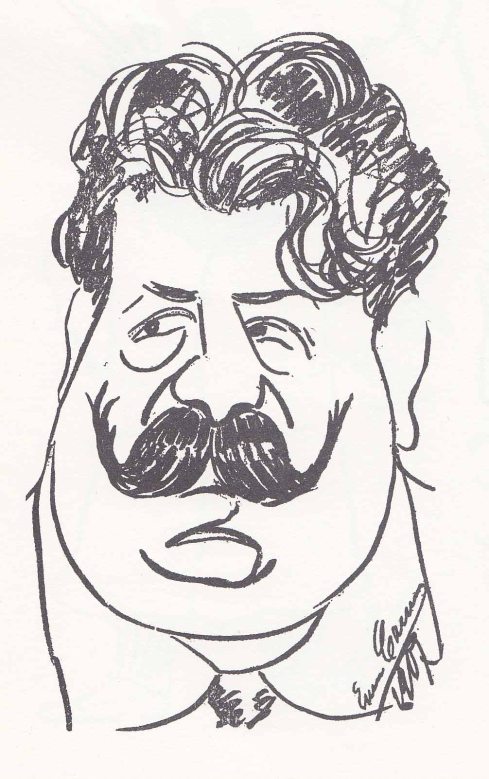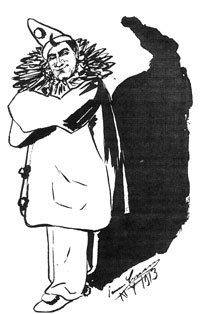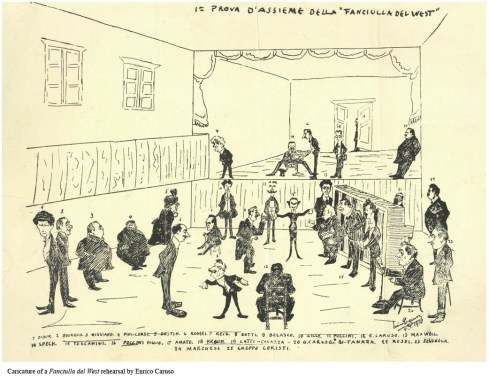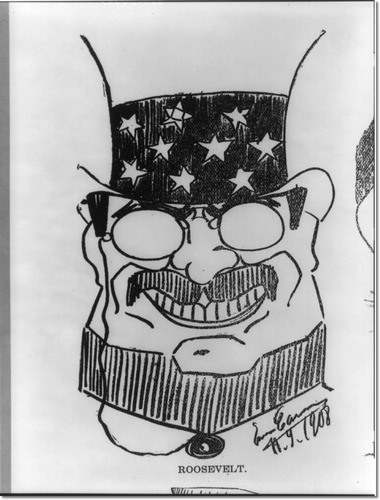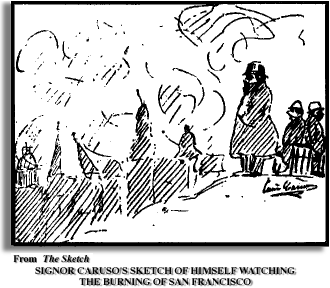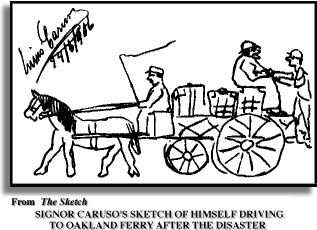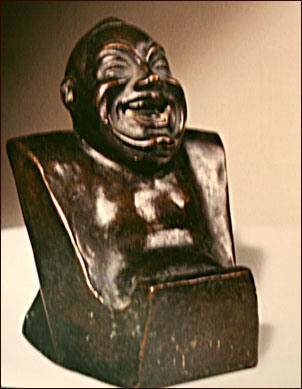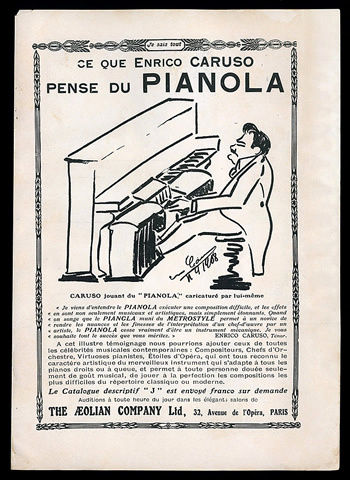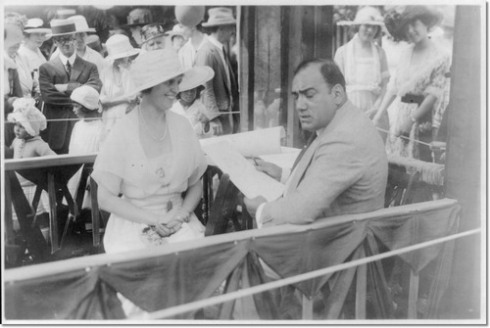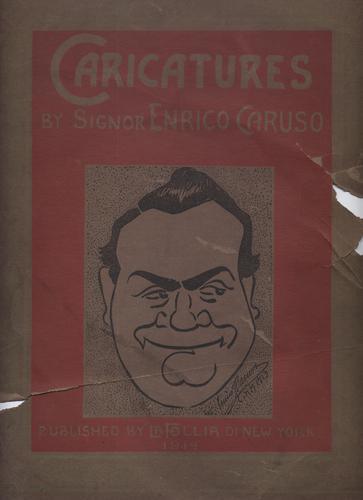This is part of a series on people who, renowned for other accomplishments, have also been cartoonists– some professional, some amateur
Francisco de Asis Javier Cugat Mingall de Brue y Deulofeo (1900–1990), better known by his stage name Xavier Cugat, was the prime big-band maestro of Latin American music: rumba, mambo, cha-cha.
He was also a professional cartoonist and illustrator all his life.
Cugat and his band at New York’s Waldorf-Astoria hotel. One of his trademarks was conducting while holding a Chihuahua dog.
Born in Catalonia, Spain, Cugat moved with his family to Havana, Cuba, when he was three. A trained violinist and arranger, he packed up and moved to Los Angeles, where he worked as a cartoonist for the Los Angeles Times newspaper during the day and played in a band at night.
This is a neat reversal of the usual situation of an artist working a day job and cartooning in his free time.
Greta Garbo
After a few years of playing smaller clubs in the Los Angeles area, Cugat got his big break when he and his band played the prestigious Coconut Grove nightclub in 1928. His style of music caught on; in the ’30s and ’40s he was nicknamed “The Rumba King” because of his popularization of that dance.
But despite all his success in concerts, records, radio, movies and (later) television, Cugat never quit drawing, providing humorous covers for several of his own record albums, publishing collections of his star caricatures and even producing an illustrated curtain for Grauman’s Chinese Theatre.
His caricatures are spare and assured, reminiscent of those of Al Hirschfeld. Below are some radio comedians:
An album cover:
A painting done for his personal pleasure:
Finally, a self-portrait:
In previous installments of this series on part-time cartoonists (with more to follow), we saw a talented amateur in Enrico Caruso, and a skilled dilettante in G.K.Chesterton.
Cugat stands out because he remained a professional cartoonist all his life, taking his graphic work as seriously as his music.
For which I tip my hat…and dance a few steps…cha-cha-cha !

